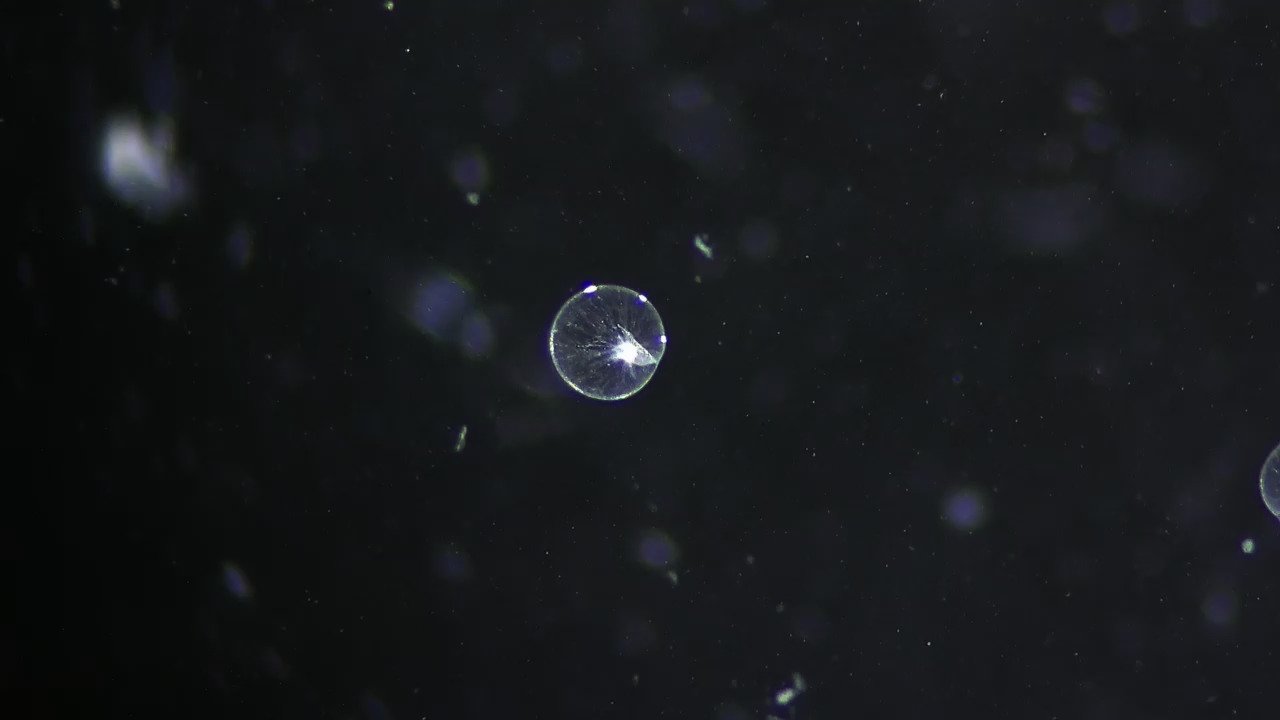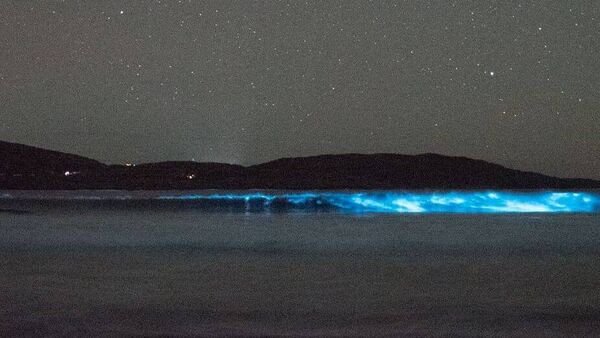A Natural Wonder of the Ocean
A calm clear sky is the perfect opportunity to go camping or stargazing, and if you’re out near the ocean, you may see another natural wonder; a special show where the water sparkles and glows with the rippling movements of the waves. Just as nuclear reactions deep within stars generates the bright glow we see from earth, there exists a natural phenomenon where chemical reactions within living organisms create a twinkling light within.
Once considered a mysterious phenomenon called “sea fire” or “sea twinkle” by coastal dwellers and sailors, we now know this process to be bioluminescence. The meaning of this term comes from the root words in Greek and Latin: “bios” is life in Greek and “lumin” is the Latin for light.
Bioluminescence is a very simple chemical reaction that happens within certain tiny plankton living in the ocean. When oxygen and a compound called luciferin, interact with an enzyme known as luciferase, an energy is created which is then released as light.
© Raluca Lica. Stunning photo of bioluminescence taken by Raluca Lica on a visit to Caherdaniel. Raluca is a member of the Astrophotography Club Ireland.
A light in the dark
You may wonder why these little plankton make light. Bioluminescence is present in many animals on land too. The firefly is a very well-known example of a land animal which produces light to attract mates or prey.
In fact, many species have the ability to either create light or reflect it. Certain animals cannot produce their own light and therefore attract bioluminescent bacteria or plankton to emit light on their behalf. This is known as a symbiotic relationship, as both the animals and the plankton or bacteria gain something from the encounter. Often the plankton or bacteria gain shelter or nutrients from the host animal.
However, it is true that most of the species on the planet which manipulate and create light, are found in the ocean. That’s because in the depths of the ocean, there is an absence of light from the sun.
There are many reasons why marine organisms use light in the dark abyss of the ocean. It could be a way for organisms to locate and communicate with one another in a colourless world. They may use a flashing light to attract and find a mate. Light can also be a shocking defence mechanism against predators, which are startled away from attacking. The atolla jellyfish use flashes of red light as a warning signal in response to being attacked. This warning signal attracts other animals, which then scare away the predator. It has the nickname “alarm jellyfish”.
Counter-illumination, which is when the bioluminescent light from an animal reflects the light of the environment, is an optical illusion that many underwater fish, squid, crustaceans and even sharks use as camouflage. Light can also be used as a lure for food. Anglerfish use their light to lure in prey. A tiny glowing bacterium lives on the anglerfish’s esca (which is the “lure”). This is a perfect example of how bioluminescence is often a symbiotic process. This bacteria gains protection while the anglerfish gets to use their light to attract food into its grasp.
An aggregation of dinoflagellate Noctiluca scintillans (phytoplankton) under the stereoscope. Photo: Hannah Brownlow, The Plankton Club UCC
A singular Noctiluca scintillans dinoflagellate seen under the stereomicroscope.
What causes a glowing sea?
The bioluminescent glow of the waves you see at night-time in late summer and early autumn is a plankton defence mechanism. The plankton startle their predators by flashing their light. They also hope the light wards off other potential predators too. As the waves and crashing sea move and mix the plankton, it activates their defence mechanism and causes them to emit their bright glow.
Not all plankton use bioluminescence. Dinoflagellates are an algae which are the most common form of marine plankton to create their own light by using luciferin. When water quality and nutrient supply are just right, colonies of dinoflagellates can expand to 100,000 single cells in one litre of water.
Noctiluca scintillans is one of the most common bioluminescent dinoflagellates across the world and the one you are most likely to see lighting up the Iveragh peninsula. It is often fondly referred to as “sea sparkle”. The name comes from Latin; Noctiluca means “light at night” and scintillans means “shining, throwing out flashes of light”.
When and where to see bioluminescence?
The Kerry International Dark Sky Reserve creates the perfect conditions and visibility for observing bioluminescence. The lack of light pollution allows the glow to be seen in its full intensity. Bioluminescence may be seen at many beaches along the Iveragh peninsula, especially in enclosed and sheltered bays where plankton become concentrated. To be able to see bioluminescence, you need to be away from any bright electric lights that will dazzle you and wash out the natural light.
It is the calm, warm seas during summer months which allow for the perfect conditions for the phytoplankton populations to grow from the end of July up to early October. Although the light from the bioluminescence is quite vivid and bright, the light of a full moon might distract from the twinkling seas, so it’s best to look for bioluminescence around the new moon.
A calm, clear night is when to best expect to see bioluminescence. And it’s always worth giving the sea a little nudge yourself and splashing the water in your hands to activate it!
Bioluminescence at Derrynane. © Vincent Hyland, Wild Derrynane
References:
1 https://en.wikipedia.org/wiki/Noctiluca_scintillans
2 https://www.chemistryandlight.eu/theory/bioluminescence/
3 https://www.nationalgeographic.org/encyclopedia/bioluminescence/
4 https://en.wikipedia.org/wiki/Firefly
5 https://ocean.si.edu/ocean-life/fish/bioluminescence
6 https://www.sciencedaily.com/releases/2014/03/140304095107.html
8 https://en.wikipedia.org/wiki/Atolla_jellyfish
9 https://en.wikipedia.org/wiki/Counter-illumination
10 https://ocean.si.edu/ocean-life/fish/meet-tiny-bacteria-give-anglerfishes-their-spooky-glow
11 https://www.dw.com/en/bioluminescence-why-plankton-glows/a-40118563
12 https://en.wikipedia.org/wiki/Noctiluca_scintillans
13 https://www.florida-adventurer.com/blog/night-kayaking-in-florida




